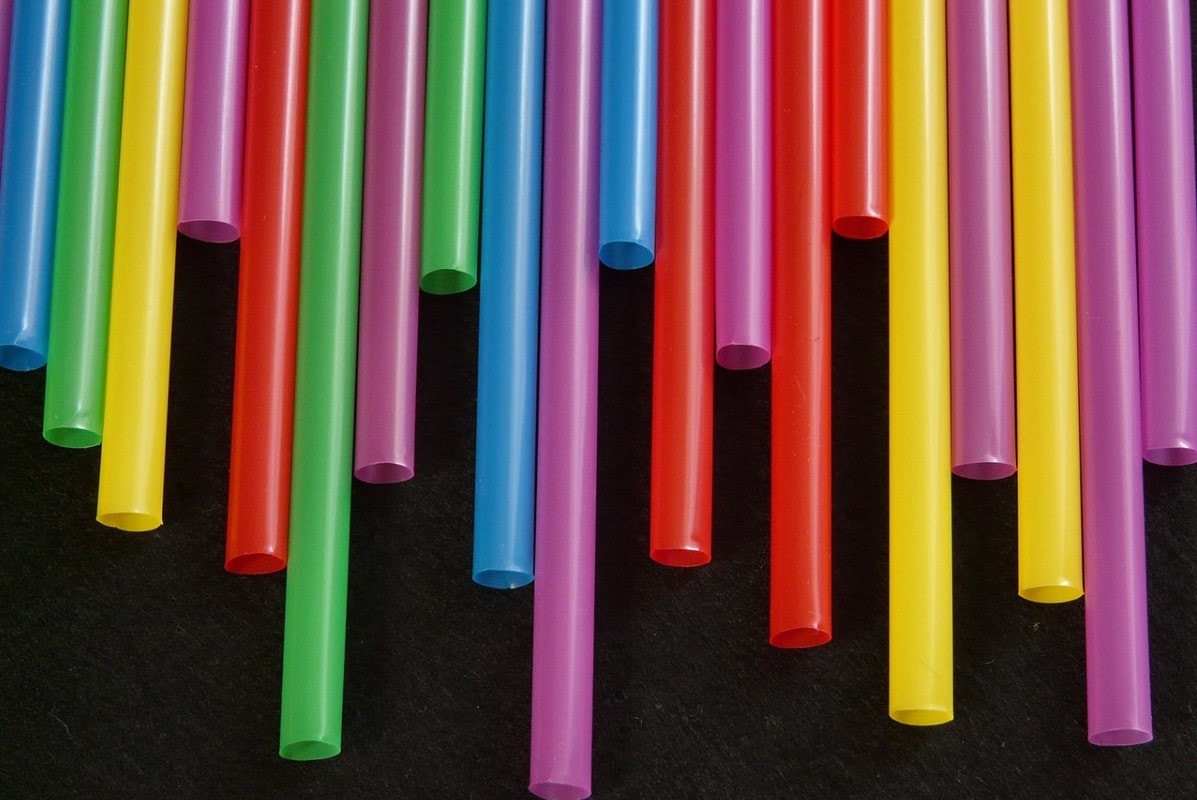Updated July 10, 2024
If you haven’t noticed or heard, single-use plastic straws are killing turtles, and plenty of other sea-life, birds and marine plant life. After a single use,the straws you use to drink out of soft drinks, iced coffee, smoothies, and more are polluting our oceans and killing its inhabitants. These types of single-use plastics have become such an integral part of our daily lives that we are now oblivious to the fact that we are even using them. Our habitual addiction to single-use plastics has become a detrimental environmental issue that needs to be addressed and dealt with. Straws have an especially harmful impact on the planet and these little pieces of plastic that we use as convenience are a life-threatening danger to marine life and pose a significant environmental threat to our oceans and the world.
As a species, our relationship with plastics is relatively new, but the tremendous impact that plastic pollution has made on the world is already out of control. Despite efforts to recycle and reuse synthetic substances, it has become clear that the only way to stop the spread of toxic plastic waste is to cut it out of our daily use. A crazy fact about plastic is that in all its many forms, it’s one of the slowest degrading materials on the planet and we as humans have developed a terrible habit of using it for everything. Plastic straws are made from one of the worst kinds of plastic called Polypropylene. This high-durability, high-flexibility plastic, can withstand extreme temperatures and as a result is often used for those items which we tend to use every day like plastic bottles, chip bags, plastic straws, and microwaveable plastic containers. This type of plastic takes almost 200 years to decompose, and despite breaking apart into smaller pieces, the plastic itself will never fully dissolve. This means that even after two hundred years the plastic will still exist in some form, it will just be invisible to the human eye, meaning it will likely be ingested by marine life or potentially by humans.
Plastic Straws Never Fully Dissolve
I know what you are thinking, well what about recycling all these plastic straws? If people just made an effort to recycle more, wouldn’t that help this problem go away? While recycling is an excellent idea, and without a doubt, crucial to do with other kinds of plastics, Polypropylene cannot be recycled. Due to its ability to withstand high temperatures and its natural resistance to chemical corrosion, this type of plastic is virtually indestructible. As stated above, it will degrade and break up into smaller pieces over time, but it will never fully dissolve. Also, most recycling plants will not take plastic straws to be recycled because of their small size, and chemical composition makes it impossible for them to be melted down and repurposed. So not only are they resistant to decomposition, but they are effectively recycling-proof, making them a sure-fire one-time-only type of product. And then to add insult to injury, these plastic straws won’t be subject to the natural process of biodegradation, even if they are lucky enough to find their way into a landfill. You read that correctly, these straws coming to rest in a landfill is the best possible option for single-use plastic straws as it is in a landfill that they can do the least amount of damage. Unfortunately for the earth, a tiny percentage of these straws end up in landfills, while a majority of them end up in rivers, waterways, and oceans.
How Do Straws Get In The Ocean in The First Place?
Once single-use plastic straws end up in our oceans, the real problems begin, but how do these straws get into our oceans in the first place? Often, due to their lightweight nature, these straws are simply blown out of the trash and into gutters which lead to drainage systems that inevitably end up at sea. In addition, birds are very attracted to straws because of their flexibility and form. Whether a bird uses a straw for its nest or eats the straw and then eventually decomposes after death, the straw remains intact and ultimately comes to rest in the ocean. It’s like the old phrase “all roads lead to Rome,” but in this case, the roads are waterways and drainage systems, and Rome is the oceans. The negative impact that plastic straws have on the environment compound once the straws congregate in the sea but all along the way these straws are eyesores, litter, and choking hazards to any creature that crosses their path. Once that straw leaves your drink, it becomes a danger to the earth and the rest of the earth’s inhabitants.
Who Does Plastic Harm?
As discussed previously, turtles are one of the largest groups affected by single-use plastic straws. The threat and danger of plastic straws translate into a grim reality of suffocation for sea turtles, and their suffering has launched a movement to end the use of plastic straws. Usually, a turtle will swallow a straw believing it is food, as it looks very similar to a piece of kelp or the seagrass that they would generally graze on. Once consumed, the straw becomes either lodged in the esophagus or worse, sucked up into the turtle’s nostrils where it remains until it can be forcibly removed by a marine biologist. More often than not, sea turtles who ingest plastic straws do not survive. It is not a matter of if a plastic straw will suffocate a sea turtle, it is merely a matter of when. The use of plastic straws is actively endangering the lives of marine life globally, and sea turtles are taking the brunt of the attack. Continued use of plastic straws will only mean more aquatic casualties, which means to use plastic straws is to support the death of innocent marine life.
The Rise of Garbage Patches
You may be wondering, how are all these turtles, and other marine animals, even coming in contact with all of these straws? How is any of this marine life so affected by all of this plastic pollution, aren’t the world’s oceans enormous? Yes, the world’s oceans are vast and expansive. But just like how plastic straws find their way into the ocean, plastic oceanic waste inevitably finds its way across the globe to collect along coastlines, in shallow seas, and even in extensive collections of trash known as garbage patches. The Great Pacific Garbage Patch is the largest offshore accumulation site for waste and debris, most of which is comprised of discarded plastics like single-use straws. There are five of these floating maritime garbage colonies spread throughout the world. The Great Pacific Garbage Patch is located halfway between California and Hawaii and is estimated to be one million square miles comprised of approximately two million tons of plastic debris. The warm water found in this part of the world is an active breeding and feeding ground for marine life like sea turtles. This patch is the largest in the world followed by a collection of four other garbage patches with one location in the Indian Ocean, another in the South Pacific, and two in the Atlantic Ocean.
These floating trash franchises are literally islands composed entirely of garbage, and most of it is plastic waste. The islands are formed as floating debris is quickly swept along the surface via major oceanic currents until it reaches an isolated spot in the ocean where the currents come to rest. Sometimes these currents push the debris toward nearby atolls or island chains which can be even more dangerous for marine life than an island of garbage. If debris is scattered across beaches and shorelines typically occupied by marine life like seals, turtles, and birds, then there is no choice for these marine animals other than to incorporate the plastic waste into their lives. Whether it enters their system as food, or whether they use it to try and make shelter, inevitably plastic waste like single-use straws negatively impact the lives of these sea animals.
Shorelines littered with plastic waste are just as significant a risk to marine life as the garbage patches themselves. The garbage patches, which offer the appearance of a potential safe haven, are attractive to a variety of marine life as they provide the illusion of rest and a potential food source. However, an island made entirely of trash can be compared to that of a mirage in the desert, but instead of mistaking sand for an oasis of water, marine life mistakes plastic waste for food and shelter. Aquatic birds, amphibians, and mammals are all potential victims as they often mistake the garbage as food and can easily be entangled in things like plastic can rings or single-use plastic bags. The death and decay that comes as a result of plastic waste debris littering coastlines, engulfing shallow seas and accumulating as large scale garbage islands is a pattern that will continue until the use of plastics, and specifically plastic straws come to an end.
How You Can Save The Environment
There are many ways to take action against single-use plastic straws and try to counteract the detrimental impact they are having on the environment. First, stop using single-use plastic straws and encourage others to do the same. This practice may take time to adopt, as the habit you have created in using plastic straws might be deeply ingrained within you. However, the first step in making a difference in the impact plastic straws have is to limit your own use of this dangerous accessory. Second, start using the phrase “no straw, please,” when you order drinks. Whether at a restaurant or bar, often these straws are given out without anyone even asking for them. Even in your attempts to consciously try and not take a straw, you may be served one on accident, causing them to inevitably throw it away, resulting in the very circumstance you were hoping to avoid. So when ordering a drink, use the phrase “no straw please,” to let the person serving you know you do not want a straw. Third, if you live in a coastal area, you can participate in beach cleanups. While single-use plastic straws may not be recyclable, at the very least, you can ensure that you are making efforts to make sure the straws are disposed of as responsibly as possible. Besides, removing straws directly from beaches ensures that marine life does not come in contact with the straws where they could potentially cause fatal damage.
Use alternatives to plastic straws. Paper and metal straws are becoming widely prevalent plastic straw alternatives, and offer the same benefits as a typical plastic straw. A stainless steel straw can easily be washed and reused plenty of times, and a paper straw is fully biodegradable, unlike its plastic cousin.
There are even companies that exist today fully dedicated to ending plastic consumption in the form of plastic cutlery with biodegradable options, including bamboo straws and compostable plates. Many countries are beginning to adopt a ‘straw ban’ legislation that’s banning plastic straws. And while this legislation is important, it is the action you take that matters most.
Most importantly, it is vital that you support companies that are active in the pursuit of a healthier global environment. Companies like FloWater actively seek to inform and protect the world’s inhabitants and resources. FloWater makes water purification systems that help to eliminate the use of single-use water bottles in an effort to change the way the world drinks water. Their 7x advanced water purification removes 99.9% of impurities found in your existing water source and improves the water by adding traces of essential minerals and electrolytes. Investing in a filtered water dispenser like FloWater’s, and using a reusable canteen or reusable straw reduces your need to turn to things like single-use plastic straws when you are on the move. It is time for us to rethink the way we approach these problems, recommit to changing our habits and patterns, and return to a lifestyle that will help sustain the earth for years to come.
Sources:
https://get-green-now.com/environmental-impact-plastic-straws/
https://www.trvst.world/inspiration/environmental-impact-of-plastic-straws/
https://www.strawlessocean.org/faq
https://www.nationalgeographic.com/environment/2018/07/news-plastic-drinking-straw-history-ban/
https://www.5gyres.org/plastic-straws




